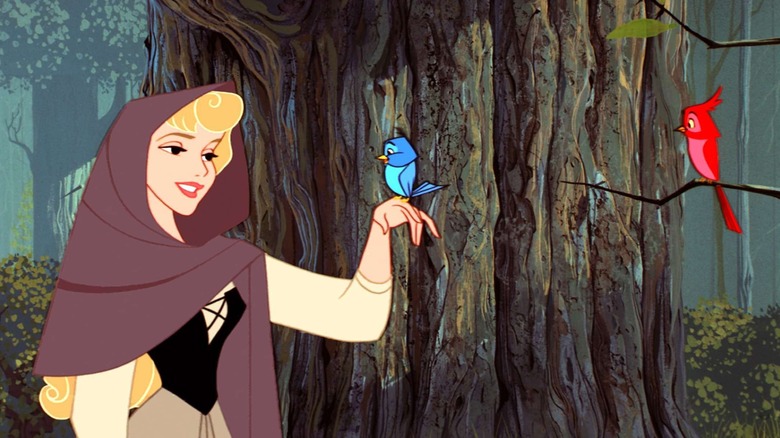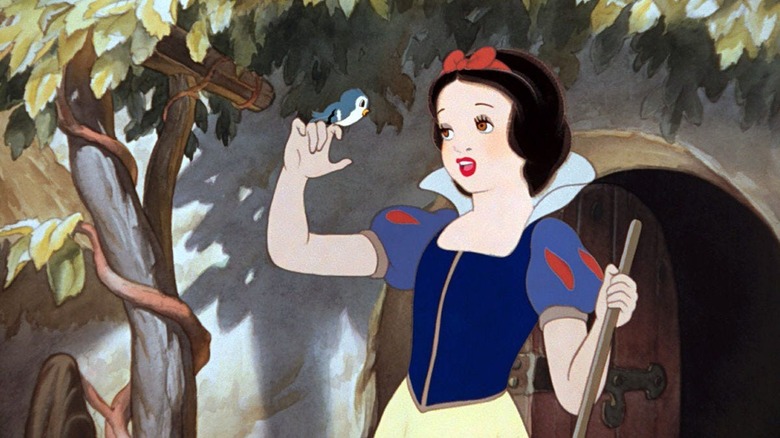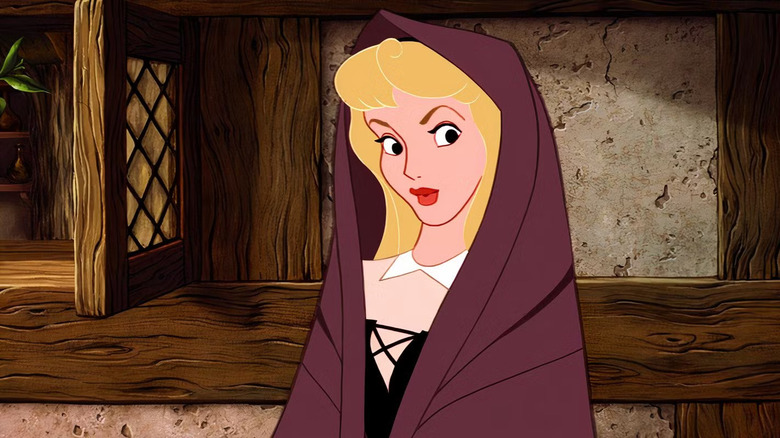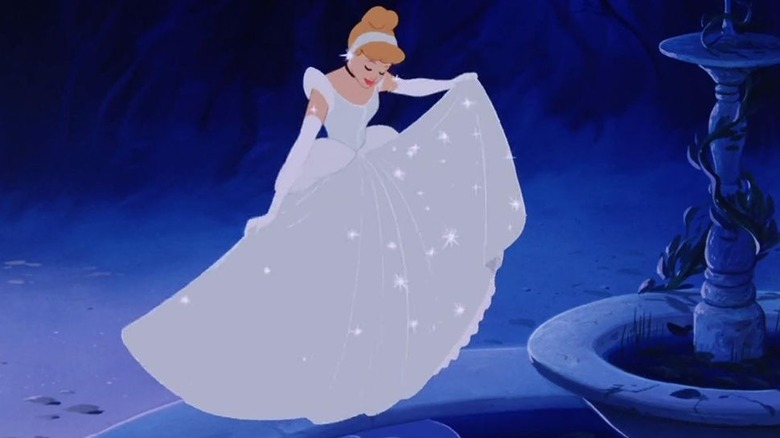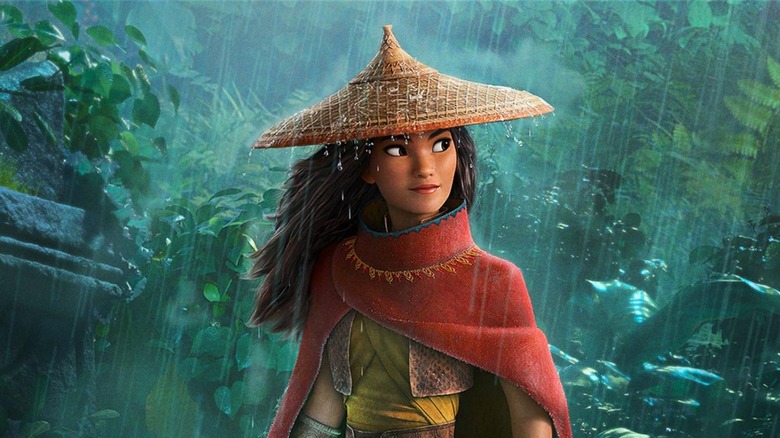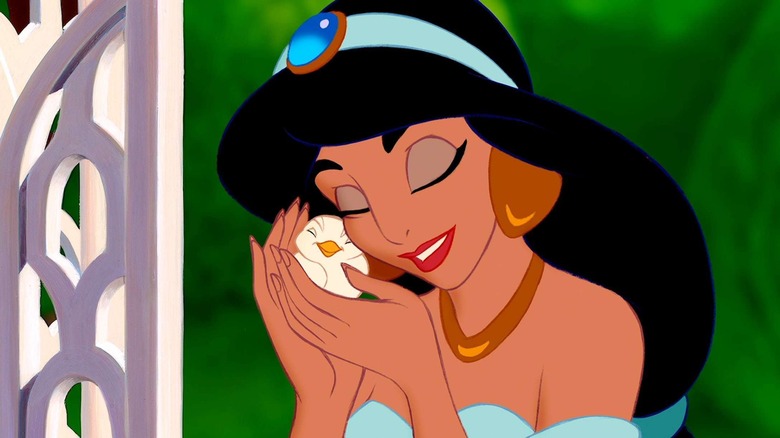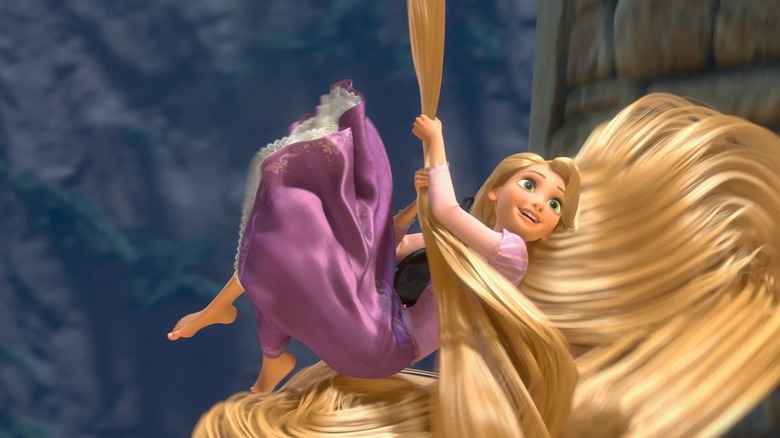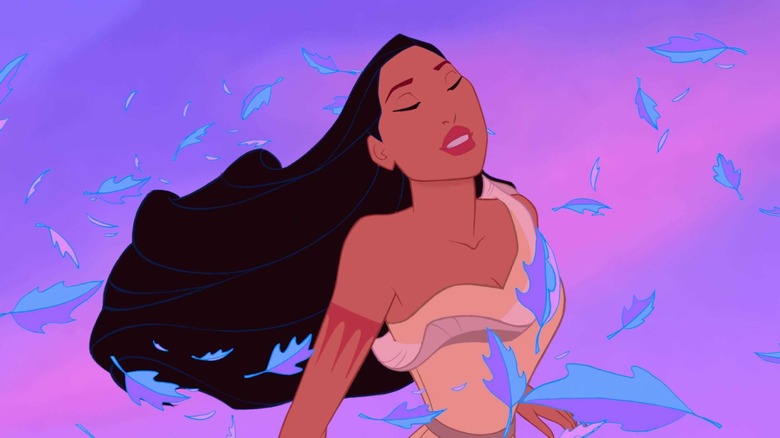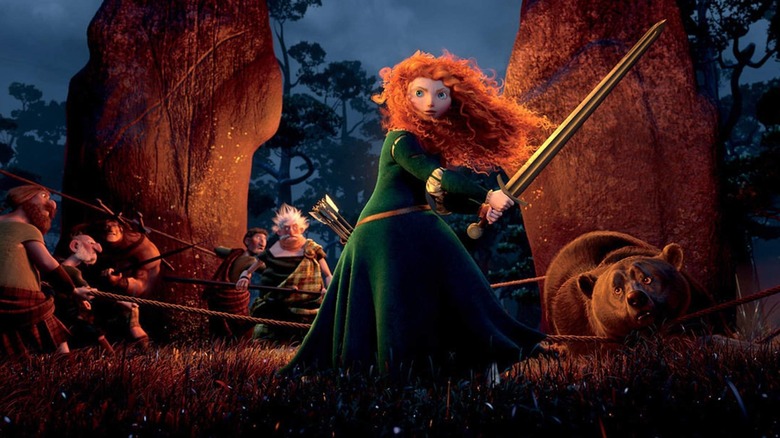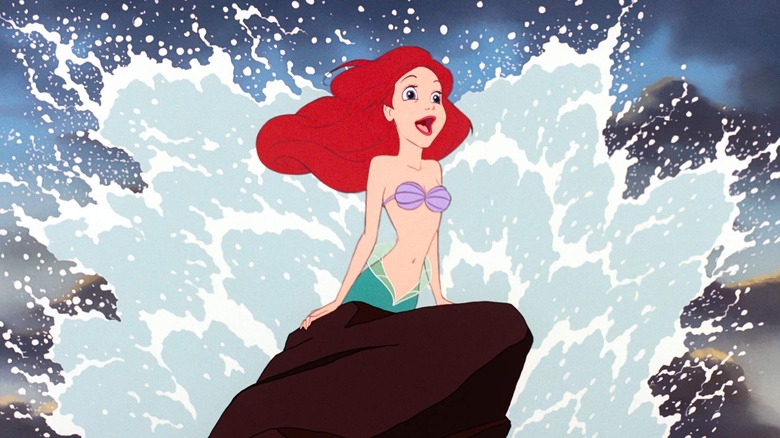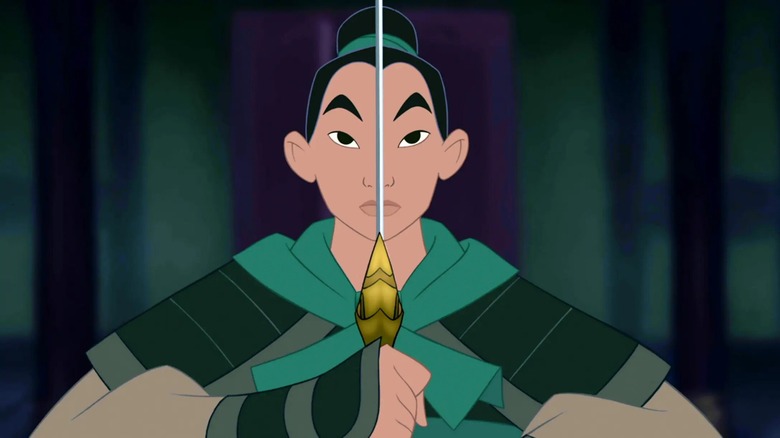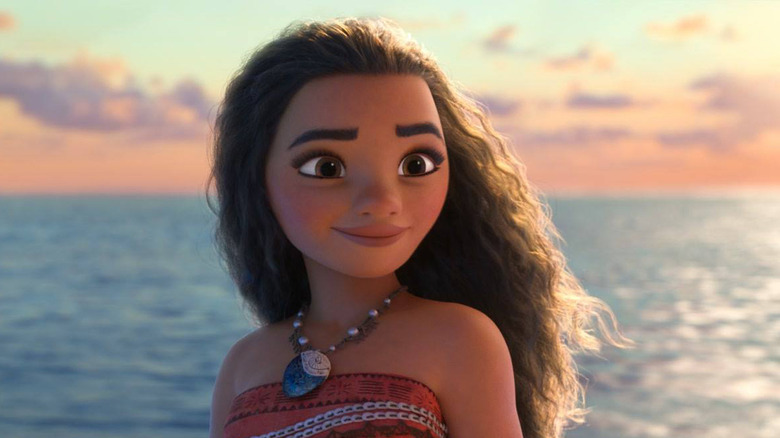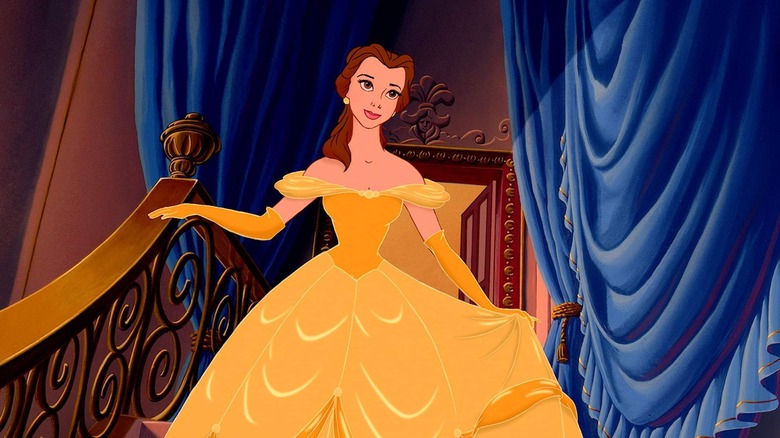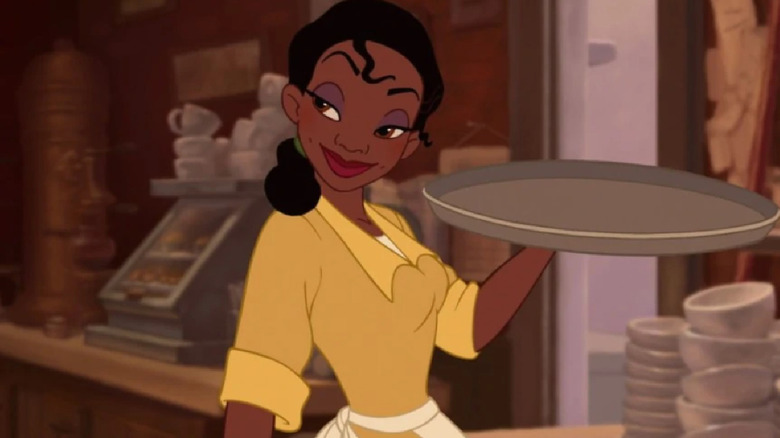All 13 Disney Princesses, Ranked
The Thanksgiving season is, and has been for a while, the time of year when Disney releases a big new animated film. Although not every title the conglomerate has foisted upon audiences has worked magical wonders, this time of year belongs to the House of Mouse just as the summer belongs to big-budget action epics. And across both Disney and Pixar's animated titles, one of the standbys are the vaunted Disney Princess characters, including Moana of Motonui, subject of Disney's latest release, the anticipated sequel "Moana 2." With that film arriving this week, it's high time that we rank the 13 Disney Princesses. Please note that we're just ranking by the quality of each character, not the films they anchor. And another thing — neither Anna nor Elsa of Arendelle will be on this list, and that is because (shockingly) neither of these "Frozen" characters are in the official Disney Princess canon (because of course there's an official canon). We'll see some crossover with Pixar on the list, but no icy sisters here. Now, let's rank the Princesses.
13. Snow White, Snow White and the Seven Dwarfs
It is an undeniable truth that "Snow White and the Seven Dwarfs" is among the 10 most important films ever made, simply because mainstream feature animation did not exist before this 1937 classic. While we can now celebrate the movie's massive success (both upon its initial release as well as over the intervening decades), it's no surprise that people saw this as Disney's folly. With hindsight, and especially with the looming live-action/CGI remake of "Snow White" arriving in the spring, though, it's worth acknowledging that as a character, Snow White is pretty much a cipher. This is as much a commentary on the fact that most of the people who made this movie were white men as it is that animation itself was still in its relative infancy. (At least Snow White's facial features are well-defined, unlike her almost faceless princely suitor.) Snow White has few big dreams in mind, and they can all be summed up by her plaintive "Someday My Prince Will Come." Even though she's beset upon by the Evil Queen, Snow White seems pretty chill and laid-back except when she dares step foot into a forest full of terrifying flora and fauna. Just as the film itself served as a proof of concept on which Disney animators could grow and expand, so too did Snow White herself feel like a template for what the studio would do in the future.
12. Aurora, Sleeping Beauty
As noted in the introduction, it's entirely possible for a princess movie to be vastly better than the eponymous princess herself. Case in point: the 1959 fantasy "Sleeping Beauty," which is a haunting, often dream-like film in its use of color, music, and its stately design. This is a gorgeous film that can honestly be best appreciated if you're partially drifting off to sleep; its storytelling is seemingly intentionally designed to feel like a waking dream. But that said, it's almost a built-in issue of the story itself that Aurora is a fairly bland character. Unlike either Snow White or Cinderella, she's literally asleep for about half of the film, and that's simply so she can avoid being killed off thanks to a nefarious curse placed upon her at birth by the vengeful and spiteful fairy Maleficent. Like the other early princess movies, the side characters are designed to be more memorable; here, to face off against Maleficent, there's a nattering trio of good fairies, Flora, Fauna, and Merryweather, who somehow manage to raise the infant Aurora into a winsome teenager despite fighting over how to bake cakes and what color of dress best suits our heroine. As iconic as some of the images in this film are, it was still proof that the studio had a long way to go to make its princesses as interesting as their friends and enemies.
11. Cinderella, Cinderella
Both the 1950 film bearing her name and Cinderella herself are a step forward for Disney after its first Princess movie. It's not that Cinderella is a character in control of her situation; decidedly the opposite is true, as she's essentially a housemaid for her imperious and evil stepmother after the death of her kindly father occurs off-screen. But unlike Snow White, Cinderella seems quite consciously aware of her station in life, and is clearly heartbroken because of it. It's a low bar to clear, but one that the film does often; it's also telling that Cinderella's big number, "A Dream Is A Wish Your Heart Makes," is much more about Cinderella simply imagining what it would be like to live a different life than it is simply about hoping a man will come along to rescue her. Now, of course, a man does eventually come along to rescue her, after her Fairy Godmother helps her go to a fancy ball at a nearby castle and she falls for a prince. But for a brief time, Cinderella is at least a more self-aware princess, which is a leap forward circa 1950.
10. Raya, Raya and the Last Dragon
Fair or not, you might almost call "Raya and the Last Dragon" the memory-holed Disney film of 2021. Had it not been for the COVID-19 pandemic, this film would have arrived in theaters at Thanksgiving 2020, but because of the virus and its refusal to die, this was shifted to the spring of 2021 and was sent to Disney+ in most markets. And although it got an Oscar nomination for Best Animated Feature, it had the misfortune of being released in the same calendar year as Disney's next animated film, "Encanto." (That film may not have a Princess, but it does have Bruno.) Raya as a heroine is undeniably one of the thornier leads in a Disney animated film, not tied down to romance or men but also somewhat similar to Mulan in how she fights back to save her father and is paired with a loquacious dragon. With Kelly Marie Tran as the lead, Raya is compelling enough, but it's difficult to watch the film and not feel as if it's just a modern remix of a very specific Disney film.
9. Jasmine, Aladdin
There is plenty of lip service paid in "Aladdin" to the notion of free will. You'd expect that, considering that the modernized hero uses a Genie and three wishes to move up in life so that he can connect further with the beautiful princess who hides out in the city streets of Agrabah one day. But that hidden princess, Jasmine, only seems so self-actualized. She's wise enough to understand that Prince Ali isn't exactly who he says he is, though not quite shrewd enough to realize that Prince Ali wasn't slumming it like her, but actually lived as a street rat. And while she chafes against the notion that she has to be betrothed to a prince by a given time, Jasmine's sole victory at the end of the film is getting to marry a non-prince, which seems like a mild win at best. "Aladdin" is, largely, one of the more exuberant and enjoyable '90s-era Disney films, but not because of its titular character or his love interest, each of whom often distract from the antics of the Genie, Jafar, and Iago.
8. Rapunzel, Tangled
"Tangled" is a fascinating film to consider, because while it boasts one of the most effectively nasty and passive-aggressive villains in the studio's history, the nature of the "Rapunzel" fairy tale, one of the most well-known in children's literature, is to depict a more old-fashioned story about a woman with little agency, trapped in a tall tower, and rescued by a kindly man after he learns exactly how long it's been since she got a haircut. "Tangled" adds in lots of magical details to explain the heroine's powerful hair and attempts to turn the romance between Rapunzel and Flynn Rider into as much a Pixar-style buddy comedy as the two go on a road trip to ensure she can see the floating lights (without realizing the significance of those lights to her biological parents). But as much as the film tries, and as much as Mother Gothel is an excellent villain, Rapunzel herself feels less filled in than her love interest or even the wistful side characters who look tougher than they act.
7. Pocahontas, Pocahontas
It's hard to knock the 1995 film "Pocahontas" for being unambitious. Not only was the source material a big swing, but depicting the real-life figure Pocahontas as both a respectful image of Native American culture as well as a quintessential Disney heroine is no small task. But as ambitious as the film and character are, the real-life parallels are just a bit too depressing to ignore. When British settlers arrived in Jamestown in the early 1600s, they did end up confronting the tribes that already lived there, but "Pocahontas" uses that as a backdrop for a Shakespearean doomed romance between Pocahontas and John Smith. Tragedy inevitably strikes, but it's not as tragic as what reportedly actually happened to Pocahontas. The weight of history is too much for this version of the real-life character to bear (and something that doesn't occur as a similar problem with basically any other Disney Princess). Irene Bedard does a fine job voicing Pocahontas, and the songs she gets to sing are quite catchy too, but you really have to separate history from art to pretend like this Princess isn't riddled with too much historical baggage.
6. Merida, Brave
To date, Pixar has only gone to the princess well once via the 2012 film "Brave." There, the focus is on the headstrong young redhead Merida, voiced by Kelly Macdonald. The young Scotswoman has very specific ideas of what it means to be a person, let alone a woman or a young princess; if it was up to her, she would simply ride through the glens and leas of the Scottish countryside, increasing her already prodigious skills with a bow and arrow. But her greatest challenge is her mother, Queen Elinor, who wants Merida to assume a more proper (read: old-fashioned) role within the kingdom, with the arrival of a few other houses whose young men would be perfect options for her to marry and thus strengthen the bonds of potential rival kingdoms. Merida's forthright nature butting up against her mother's leads to the inevitable buddy-comedy-style adventure on which they embark once a spell Merida decides to invoke accidentally turns her mom into an anthropomorphized bear. Unlike other Princesses here, Merida has no interest in love, and does end up compromising with her mom in the end to have some of the same freedom she used to have before coming of age. If anything, the issue is less Merida and more the inexplicably zany hijinks of the second half of the film in which she's ostensibly the main focus.
5. Ariel, The Little Mermaid
In hindsight, it's difficult not to watch films like "Frozen," wherein characters chide the chatty Anna for falling in love with someone she just met, and wonder if they're specifically criticizing the arc for Ariel in "The Little Mermaid." This is among the more critical films in the Walt Disney Animation Studios canon, because it helped re-establish the studio as a force for creative whimsy at a time when animation was on the wane. Not only that, but the film basically created a new template for future films, blending Broadway-worthy ballads and show-stoppers with delightfully campy villains, memorable comic-relief supporting roles, and swooning romances. But Ariel hasn't even really met the blandly attractive Prince Eric when she tells her father that she loves the young human, even if she's not of the same species. Her passion is undeniable, as evidenced in the wonderful "I Want"-style song "Part of Your World," but much of what she wants is to be with a man she doesn't really know as much as it is to have human legs and walk above the water. It's a testament to Jodi Benson and the work of Alan Menken and Howard Ashman (the latter of whom is credited as a screenwriter on the film, a rarity for Disney composers) that they make Ariel so captivating in spite of seeming fairly antiquated compared to the young women who would follow in her eventual footsteps.
4. Mulan, Mulan
To see the growth of Disney Princesses, you just have to compare Ariel from "The Little Mermaid", arriving in theaters in 1989, with Mulan from the 1998 film bearing her name. In just nine years' time, Disney had leapt from depicting a story about a slightly more modern take on the old-fashioned princesses to adapting a classic Chinese legend in which a young woman goes undercover in the military as a young man, both to prove herself and to rescue her ailing older father from mandatory service to the Chinese emperor. It is true that by the end of "Mulan," our heroine has essentially wound up with a handsome man, the no-nonsense military leader Li Shang. But that's not remotely what spurs her on her mission, one in which she's paired with a fast-talking sidekick (Eddie Murphy as the dragon Mushu) despite barely needing the help as she begins to prove her worth to herself and the other young men in her unit. Mulan is a rare Disney Princess, someone who's plenty tough without having to constantly remind us how tough she is.
3. Moana, Moana and Moana 2
By 2016, it would have been more surprising for a Disney heroine to actually have a love interest than not; "Frozen" did end up pairing Anna off with the burly Kristoff, but only after he chided her for accepting a marriage proposal from a man she just met. Instead, for the titular character in "Moana," there's no need for romance, especially since from the outset of the exuberant film, it's clear that Moana will be the next leader of the island of Motonui. But to take her rightful place on the throne, she first has to pair up with the demigod Maui to get the heart of the ocean back in its rightful place. As voiced by Auli'i Cravalho, Moana is a charming, funny, and shrewd heroine who's one of only a few of the princesses on this list to not be partially defined by a love interest, specifically because she doesn't have one. And unlike in a film such as "Frozen" or "Brave," there's no sense in the original film of Moana needing to have a love interest or that to become the next overseer of Motonui, she must get married. Instead, Moana proves herself a capable, curious, and strong young woman who outshadows any male presence that dares get in her way. It also helps that, with the music of Lin-Manuel Miranda behind her, Moana's got excellent songs to define her character.
2. Belle, Beauty and the Beast
Ariel learned to walk on two legs so Belle could run. While "The Little Mermaid" is a charming film with iconic music and a grandiose villainess, "Beauty and the Beast" comes bursting out of the gate with more on its mind thanks to a packed-to-the-gills opening sequence that not only establishes the conflict in which the bookish young Belle is seen as baffling to others (even the outlandishly handsome Gaston, who wants to marry her so that he can tame her into a misogynistically typical wifely role), but also that Belle has vast dreams of her own that extend beyond the quiet little village where she lives with her inventor father. That the ensuing love story between her and a young man transformed into a hideous beast works is all the more impressive considering that it's also the story of a woman falling in love with her captor, Stockholm Syndrome-style. Voiced by Paige O'Hara, Belle is one of the most perceptive heroines in the studio's history, even if she does end up falling in love awfully quickly. It's a testament to how amazing the film is that it remains the only Disney animated film to crack the five-title Best Picture category at the Oscars (the only other nominees occurred when the Academy doubled the amount of nominees), and a testament to Belle herself. An odd but special character indeed.
1. Tiana, The Princess and the Frog
Time has been kind to Tiana, a hard-working waitress from the bayous near New Orleans. When "The Princess and the Frog" opened in theaters in 2009, it was meant as a full-throated return to hand-drawn form for Walt Disney Animation Studios. While the film itself is still among the best that Disney has made since its '90s-era renaissance, it had the misfortune of being released at the same time as James Cameron's "Avatar." (And this, of course, was before Disney owned "Avatar.") But now, as the film approaches its 15th anniversary, Tiana has become the star of a marquee attraction, Tiana's Bayou Adventure, at both Disneyland and Walt Disney World, and the film's memorable music has grown in stature as well. It's well-deserved too; Tiana herself is the sharpest, most well-drawn heroine the studio has ever crafted. Like some of the earliest Princesses, she only becomes one at the end after falling in love with her true love. But Tiana is (sometimes to her detriment) laser-focused on her goal of opening up a restaurant to actualize her own dream while paying tribute to the father she lost in World War I. With Anika Noni Rose providing Tiana's voice, the character is one of the most multi-dimensional and instantly lovable characters in Disney history. She's not almost there; she's at the top.
